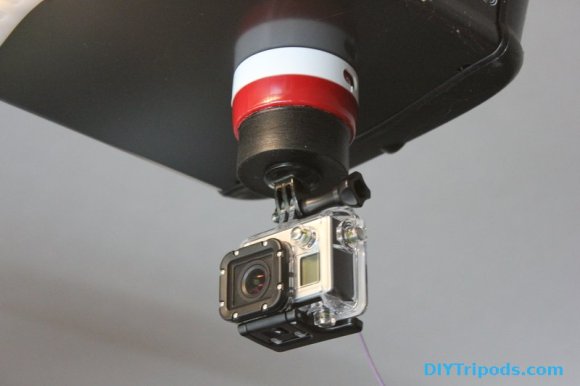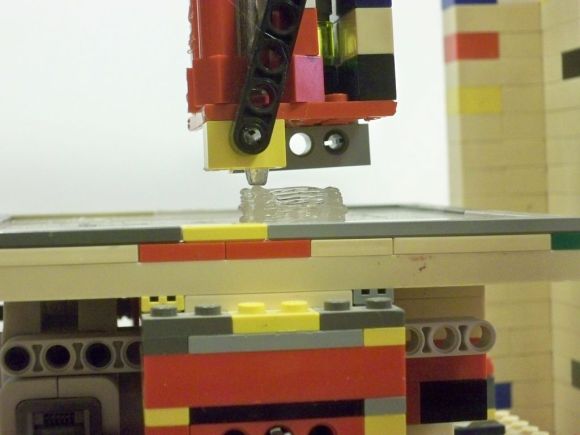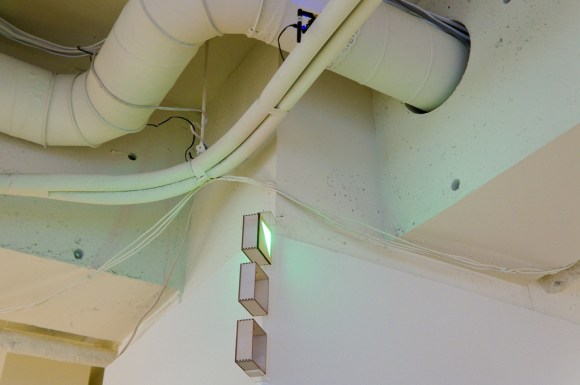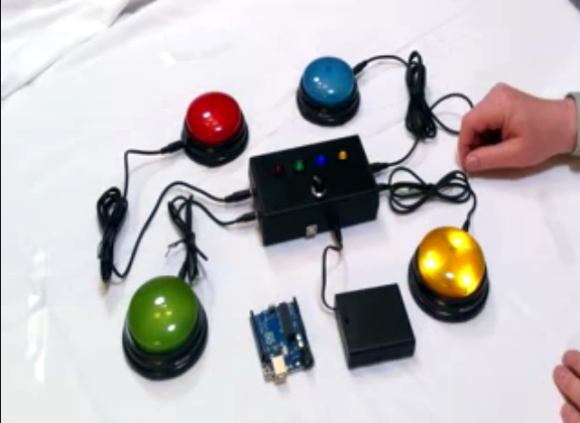
[Jeremy Cook] is getting in on the panning time-lapse craze with his offering for a camera mount that pans automatically. In this case he’s using a GoPro camera, but since the camera connects using a 1/2 1/4 – 20 bolt it will work with any camera that has a standard threaded tripod mounting bracket.
The base of the rig is an egg timer he picked up for about eight dollars. It’s magnetic so that you can stick it to your refrigerator, but has enough gripping power to hold the camera upside down. The image above shows it stuck to his garage door opener housing. A PVC cap makes up the black part. Before painting it (with truck bed liner so that it’s a bit grippy) he used his lathe to remove the flat areas from the sides, and to cut it in half. He then drilled and threaded a hole in the center to accept the bold for the camera. The cap was super glued to the egg timer, which happens to have a window on the side so that you know how long you’re setting it for.
This is an easy alternative for those that don’t have the resources to make a 3D printed egg timer mount. The lathe step is not necessary, but since [Jeremy] had one he used it. It does make the final product look quite a bit nicer.
Continue reading “Magnetic Panning Time-lapse Camera Mount Couldn’t Be Easier”













